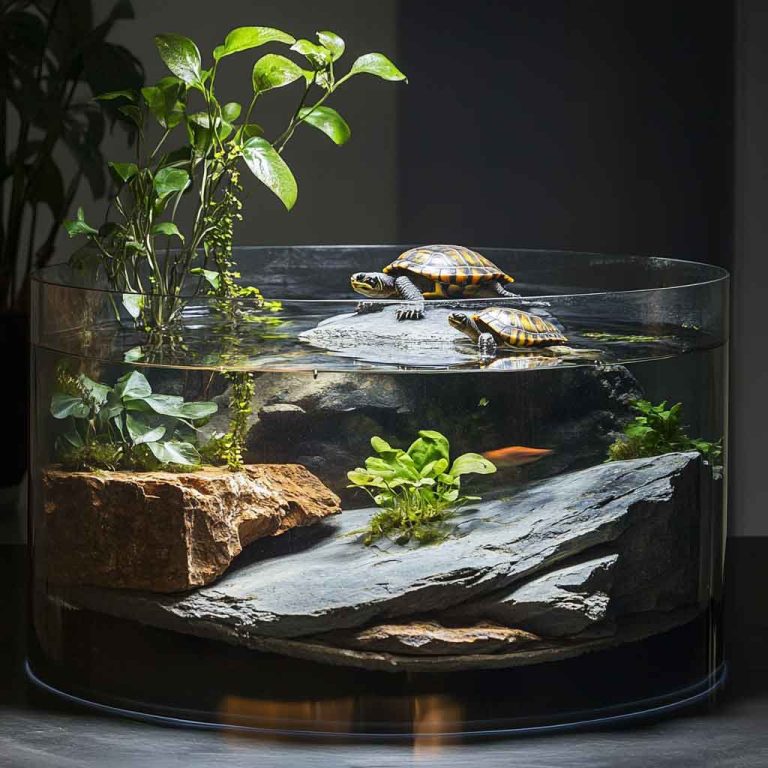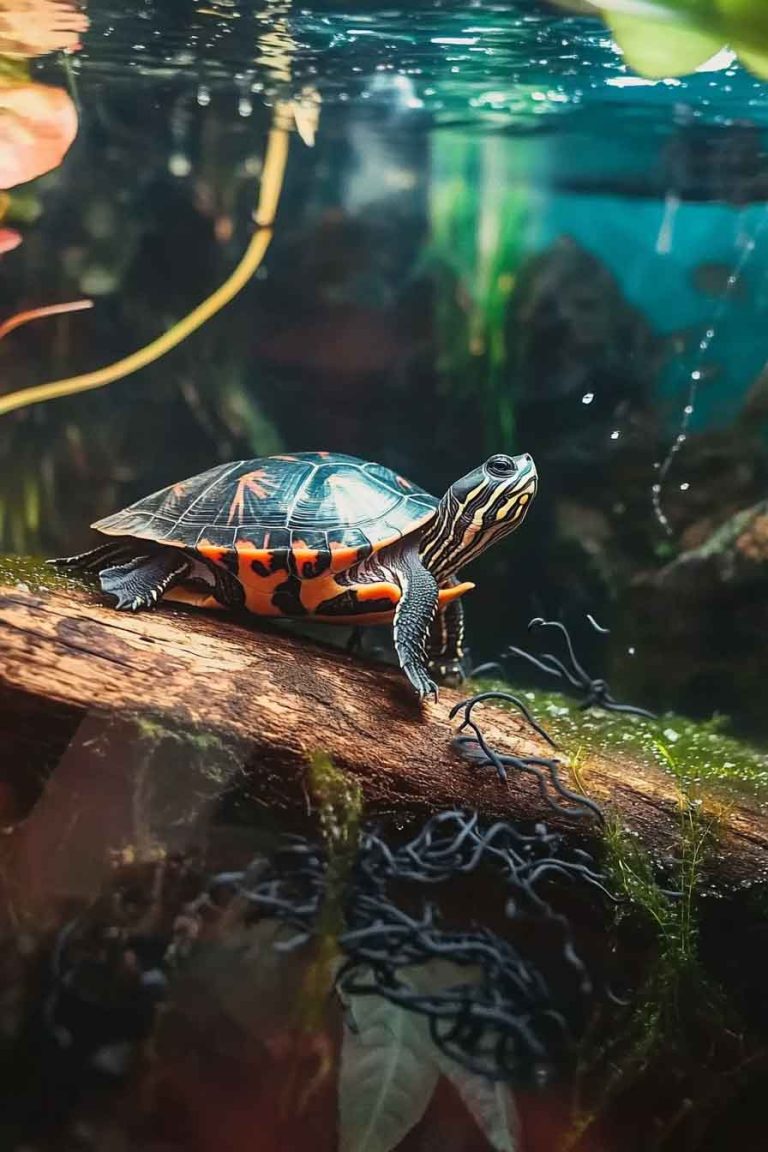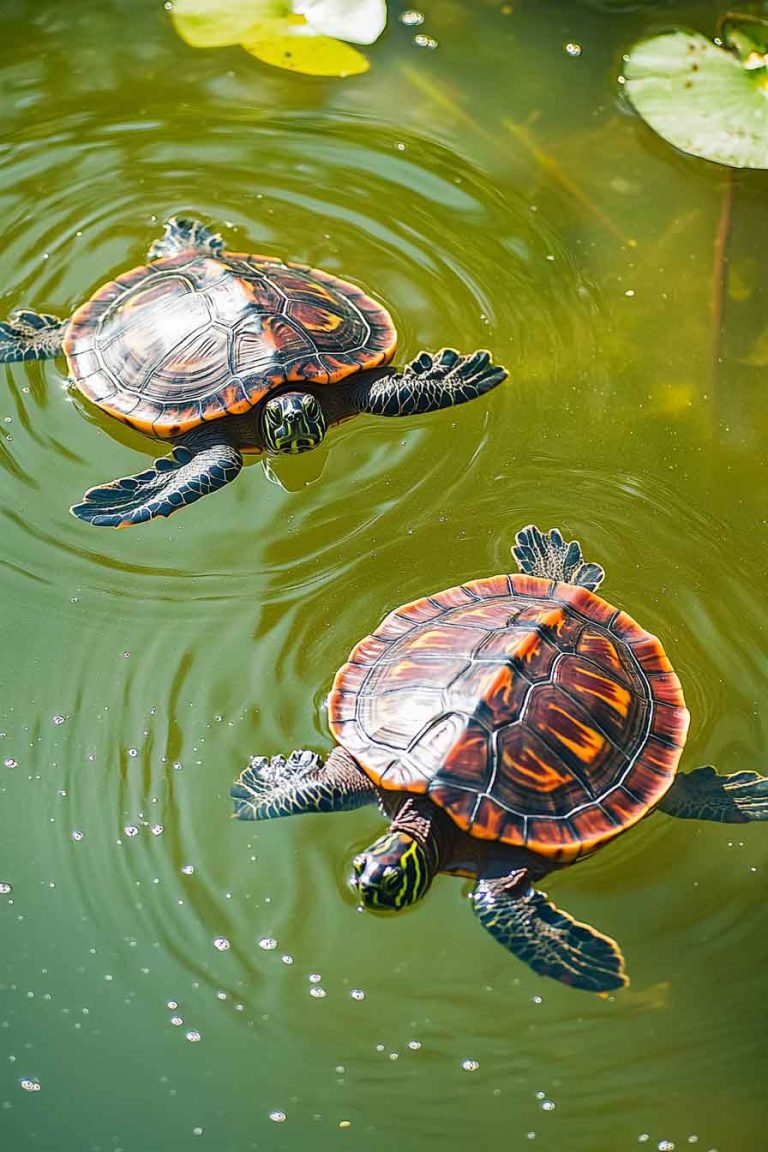Can You Potty Train a Turtle? Step-by-Step Guide
Turtles are amazing pets. They have unique habits and live for many years. As a turtle owner, you may want to keep their tank clean with less work. Can you potty train a turtle? Yes, you can, especially aquatic and semi-aquatic turtles. By using their natural habits and a daily routine, you can teach them…
Turtles are amazing pets. They have unique habits and live for many years. As a turtle owner, you may want to keep their tank clean with less work. Can you potty train a turtle? Yes, you can, especially aquatic and semi-aquatic turtles. By using their natural habits and a daily routine, you can teach them to poop in a specific spot, like a water container. This makes cleaning easier.
This article explains how to potty train turtles. It covers the steps, tips, and factors that help you succeed. In this first part, we’ll talk about turtle habits and why potty training works.
Understanding Turtle Habits
Turtles have special ways of pooping. Most turtles like to poop in water because it’s part of their biology. Aquatic turtles, like red-eared sliders or painted turtles, often poop while swimming. Water helps them go. Terrestrial turtles, like box turtles, are less predictable but can learn to use a specific spot with training.
Potty training means guiding turtles to poop in one place, like a water container or a corner of their tank. Turtles won’t “hold it” like dogs or cats, but they can learn to use a spot with the right routine and setup.
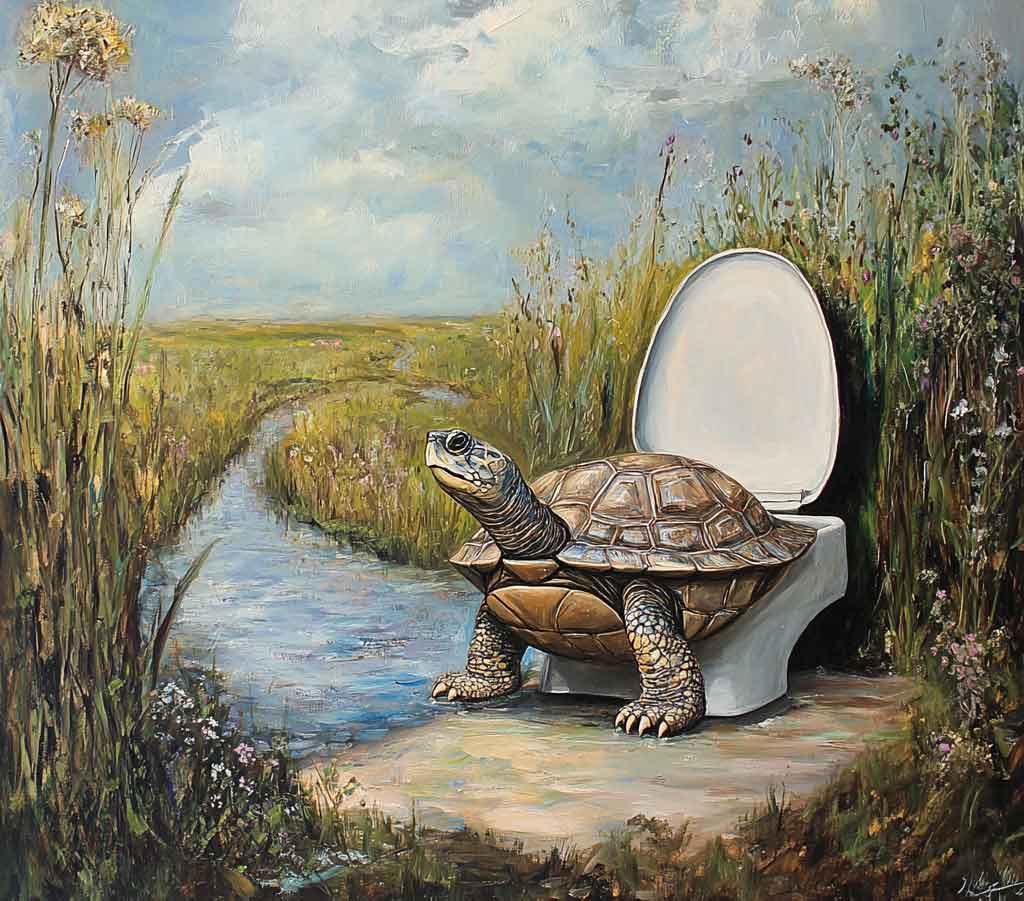
Why Potty Training Works
Turtles can learn simple things through practice. For example, they know when it’s feeding time or where to bask. This ability helps them learn to poop in a certain place. Here’s why potty training is possible:
They Like Water
Aquatic turtles naturally poop in water. It helps them digest food and keeps their space clean in the wild. A separate water container can encourage them to use it every time.
They Love Routines
Turtles do well with a schedule. Feeding them at the same time or placing them in a water container after meals helps them connect that spot with pooping.
They Notice Their Surroundings
Turtles pay attention to things like water warmth or a familiar container. A consistent setup helps them learn where to go.
How to Potty Train Your Turtle: Easy Steps
Potty training a turtle takes time and patience. It won’t happen fast, but a clear plan can keep your turtle’s tank cleaner. These steps focus on aquatic and semi-aquatic turtles, with tips for terrestrial turtles too. Follow this guide to make potty training simple.
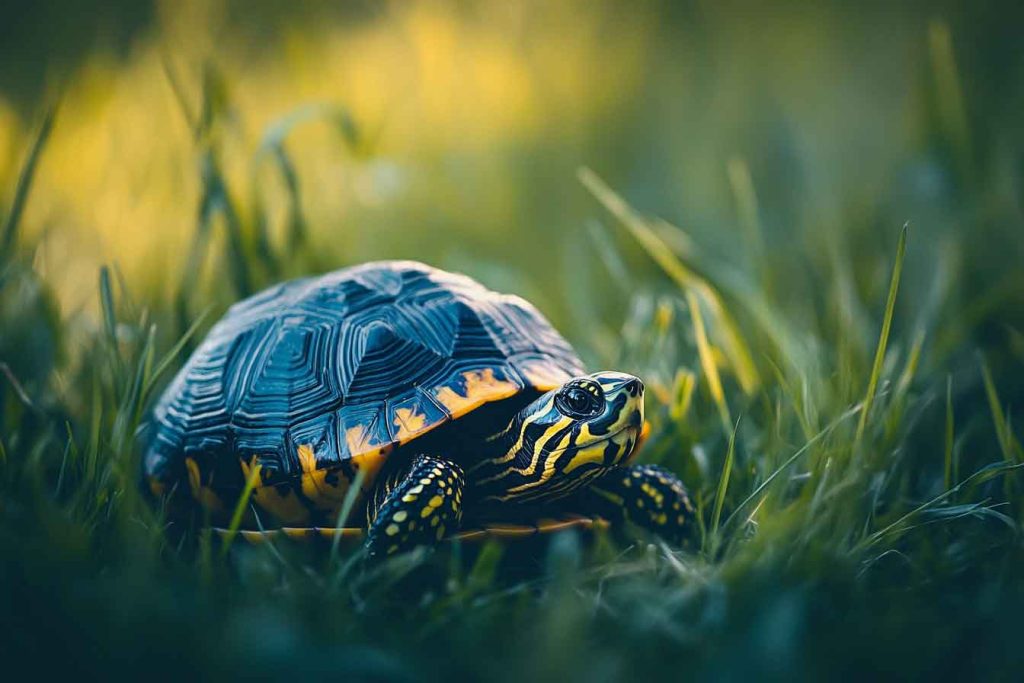
Steps to Potty Train a Turtle
1. Watch Your Turtle
Notice when and where your turtle poops. Aquatic turtles often poop after eating or while in water. Terrestrial turtles may poop after meals or in certain spots. Knowing their habits helps you plan a training routine.
2. Make a Potty Spot
For aquatic turtles, use a small, shallow container with warm water (75–80°F) as the potty spot. It should be easy to get in and out of and different from their main tank. For terrestrial turtles, try a shallow water dish or a damp moss area. Make sure the spot feels natural and comfy.
3. Set a Feeding Schedule
Feed your turtle at the same time every day. Turtles usually poop 30 minutes to a few hours after eating. Right after feeding, put your turtle in the potty spot for 15–30 minutes. For aquatic turtles, keep the water warm to help them go.
4. Reward Good Behavior
When your turtle poops in the potty spot, give them a small treat, like their favorite food. This helps them learn the spot is good. Always put them in the same spot after meals, even if they don’t poop every time.
5. Keep the Tank Clean
A clean tank stops your turtle from pooping outside the potty spot. For aquatic turtles, keep the main tank water clear (75–85°F, pH 6.5–8.0) so the potty container feels better. For terrestrial turtles, clean up waste quickly to encourage using the potty spot.
6. Stay Patient
Training can take weeks or months. It depends on your turtle’s age, type, and personality. If they don’t use the potty spot, try changing the water temperature, container size, or timing. Some turtles need a bigger or shallower container.
Tools You Need
- Shallow container: Pick one your turtle can easily use for the potty spot.
- Thermometer: Check the water temperature in the potty container.
- Timer: Keep track of time in the potty spot after feeding.
- Cleaning supplies: Keep the potty spot and main tank clean.
- Treats: Use small, safe treats to reward your turtle.
Tips for Success
- Start Early: Young turtles learn faster, but older ones can learn too.
- Warm Water Helps: Aquatic turtles like warm water (around 80°F) for pooping.
- Be Gentle: Move your turtle carefully to avoid stress, which can slow training.
- Check Health: If your turtle stops pooping or acts sick, see a reptile vet.
What Affects Potty Training and How to Fix Problems
Potty training a turtle can work, but some things make it easier or harder. Knowing these factors and how to handle common issues will help you keep your turtle’s tank clean and make training smoother.
What Affects Potty Training Success
Turtle Type
Aquatic turtles, like red-eared sliders or painted turtles, are easier to train because they like to poop in water. Terrestrial turtles, like box turtles, need more work since their pooping habits vary.
Turtle Age
Young turtles learn new habits faster. Older turtles with set routines may take longer to train. With steady effort, all turtles can learn.
Routine Consistency
Turtles love schedules. If feeding times or potty spot visits change often, your turtle may get confused. Stick to a daily plan to help them learn.
Tank Setup
The potty spot must stand out. If it’s too similar to the main tank (for aquatic turtles) or not comfy (for terrestrial turtles), your turtle won’t use it. Make the potty spot unique and cozy.
Health and Stress
Healthy turtles train better. Stress from dirty water, wrong temperatures, or too much handling can stop progress. Keep the tank right (75–85°F for aquatic turtles, 50–70% humidity for terrestrial turtles) and check your turtle’s health.
Common Problems and Fixes
Turtle Poops Outside Potty Spot
If your turtle ignores the potty spot, they may not link it with pooping yet. Fix: Put them in the potty spot more often after meals. Make sure the water or moss is comfy. For aquatic turtles, try warmer water (around 80°F).
Pooping at Random Times
Some turtles don’t poop on a schedule. Fix: Keep them in the potty spot longer (up to 45 minutes) after feeding. Watch them for a week to spot patterns.
Turtle Seems Stressed
Too much handling or a bad potty container can upset your turtle. Fix: Handle them less, use an easy-to-reach container, and keep the area calm (no loud noises or bright lights).
Dirty Main Tank
If the main tank’s water is dirty, aquatic turtles may poop there instead of the potty spot. Fix: Clean the tank often and keep water quality good (pH 6.5–8.0, low ammonia).
FAQs
1. Can every turtle be potty trained?
Most turtles can learn a bit, but aquatic turtles are easier because they poop in water. Terrestrial turtles, like box turtles, need more time and effort.
2. How long does potty training take?
It depends on the turtle’s age, type, and your routine. It may take weeks or months for them to use the potty spot regularly.
3. What if my turtle stops pooping?
If your turtle doesn’t poop or seems tired, eats less, or acts odd, it might be sick. See a reptile vet right away.
4. Can I train without a separate container?
For terrestrial turtles, a damp corner in the tank can work. For aquatic turtles, a separate water container is best to keep the main tank clean.
Final Word
You can potty train a turtle with patience and a good plan. Use their love for water (for aquatic turtles) or a cozy spot (for terrestrial turtles) to cut down on tank mess. Things like turtle type, age, and routine matter, so adjust training to fit your pet.
Problems like random pooping or stress can happen, but you can fix them by tweaking the routine. Follow the steps—watch habits, set up a potty spot, keep a schedule, and reward good behavior—to make turtle care easier and keep the tank clean.
Start training your turtle now for a cleaner tank and a happy, healthy pet!

